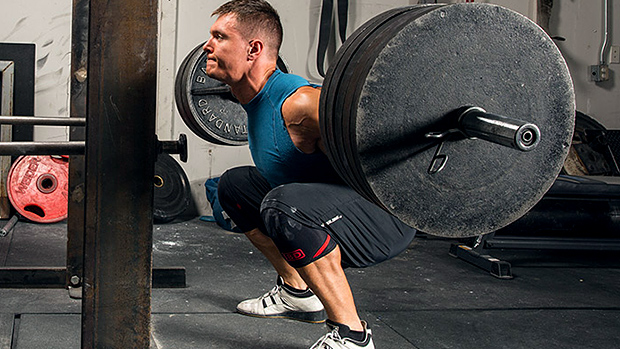The squat is one of the most well known, if not the most well-known exercise for developing lower body strength. One of the age-old questions in the athletic community and strength and conditioning world is how low should I go? This post aims to delve into this topic and provide insight into how low one should go when squatting.

Early research into the squat suggested that with increased knee bend there was increased stress on the knee joint and while this is partially true (as tibiofemoral and patellofemoral compression increases with increasing knee angle), the maximal mean peak shear forces reported are much lower than the patellar and quadriceps tendons can withstand, and therefore while these forces increase with squat depth, they are within ranges that would tend not to significantly damage these tissues in an healthy individual. Furthermore, peak anterior shear forces occur from 0 – 60 degrees of knee flexion, making the anterior cruciate ligament (ACL) most susceptible at this range, and these forces decrease with increased squat depth. Posterior shear force begins at 30 degrees flexion, with peak forces reported at 90 degrees of knee flexion and decreasing below 90 degrees of flexion. Therefore, while it is true higher forces exist at greater knee flexion, deep squats decrease stress on the ACL and PCL compared to partial squats of 90 degrees knee flexion or less.
While the knee joint is the most commonly addressed joint when talking about squat depth, the loading mechanics of the spine also come into question. It has been shown that with increased forward lean, forces on the lumbar spine are increased. Furthermore, in lumbar flexion or excessive lumbar extension we also see these forces increase with the squat. In terms of the effect of squat depth on the spine, if a neutral lumbar spine and forward gaze can be maintained this is more important than squat depth itself. Furthermore, it appears front squats and low bar back squats provide less stress on the spine than high bar back squats.
When we look at muscle activation, deep squats tend to activate hip musculature more than partial squats, so if we are trying to maximize the strength of our hip musculature (including our most powerful hip extensor gluteus maximus) deep squats with a wider stance and feet slightly turned out (anatomical position) are preferred, as partial squats up to 90 degrees maximize quadricep activation.
Overall there are many benefits to deep squats, but this is only if we can perform deep squats with proper form and technique. Likewise, there may be some scenarios where deep squats are contraindicated such as those with previous PCL injuries or patellofemoral disorders. Furthermore, squat depth should be consistent with individual goals and proper technique and execution needs to be maintained. Individuals should seek advice of an exercise professional on squat technique and should have an assessment done to find what is right for them in their exercise program. However, if you can squat to depth below 90 degrees it seems to be beneficial to athletic development and may even be less stressful on supporting structures.
Note – Information in this article is based off the brief review titled “Squat Kinematics and Kinetics and Their Application to Exercise Performance” Brad J. Schoenfeld published in 2013 the Journal of Strength and Conditioning Research. Access this article here: https://journals.lww.com/nsca-jscr/Fulltext/2010/12000/Squatting_Kinematics_and_Kinetics_and_Their.40.asp

